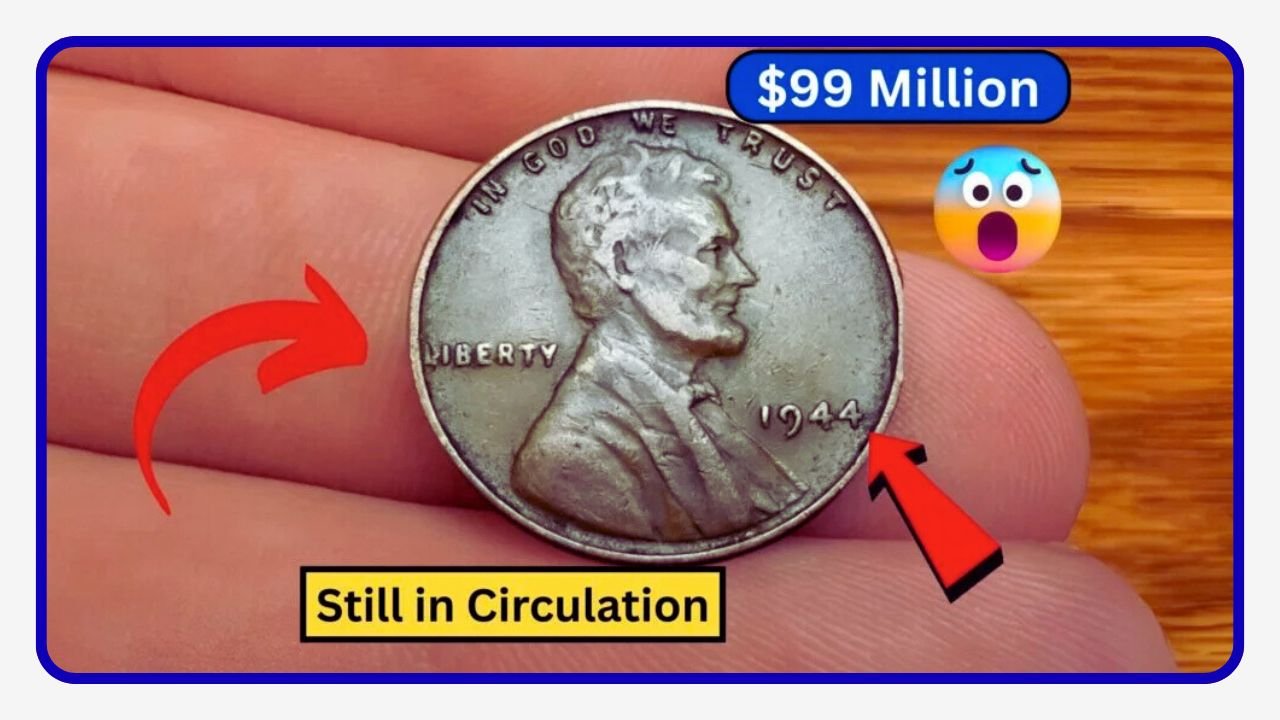Lincoln Wheat Penny: Imagine finding a penny in your change that could make you a millionaire overnight. Sounds like a fairy tale, right? But the Lincoln Wheat Penny, a small coin from America’s past, has some rare versions that collectors say could be worth up to $99 million. This penny, minted between 1909 and 1958, is famous for a few super-rare errors, especially one from 1943. Even crazier, some of these valuable coins might still be floating around in your pocket, coin jar, or piggy bank. Let’s dive into what makes this penny so special and how you might spot one.
A Penny with a Big History
The Lincoln Wheat Penny was first made in 1909 to celebrate Abraham Lincoln’s 100th birthday. It was the first U.S. coin to feature a real person instead of symbols like Lady Liberty. Designed by Victor David Brenner, it has Lincoln’s face on the front and two wheat stalks on the back, giving it the nickname “Wheat Penny.” These coins were common for nearly 50 years, but a few rare ones, especially from 1943, have become treasures for collectors because of a mistake during World War II.
The $99 Million Mistake
During World War II, copper was needed for the war, so in 1943, the U.S. Mint switched to making pennies out of steel coated with zinc. But a few copper blanks from 1942 got mixed up and were accidentally stamped with the 1943 date. These rare 1943 copper pennies are now some of the most valuable coins in the world. Only about 15 to 20 are known to exist, and one sold for $1.7 million in 2010. Some collectors believe a perfect one could fetch up to $99 million today because of its rarity and history, though that price is more of a rumor than a fact.
Could It Still Be Out There?
Yes, it’s possible! These rare pennies slipped into circulation by mistake, meaning they could still be hiding in old coin collections, cash registers, or even your loose change. People often overlook pennies, so one of these treasures might be sitting unnoticed. In 2019, someone found one in a roll of pennies, proving they can still turn up. The odds are slim—like winning the lottery—but that’s what makes hunting for them so exciting.
How to Spot a $99 Million Penny
Finding a 1943 copper penny takes a sharp eye. Here’s what to look for:
- Date: Check for a clear “1943” on the front.
- Material: It should be copper, not steel. Copper pennies are reddish-brown, while steel ones are silver-gray.
- Magnet Test: Copper pennies won’t stick to a magnet; steel ones will.
- Weight: A copper penny weighs about 3.11 grams, while a steel one is around 2.7 grams.
- Mint Mark: Look under the date for a “D” (Denver) or “S” (San Francisco). Philadelphia coins (no mint mark) can also be valuable.
- Condition: The better the shape, the more it’s worth.
| Feature | Rare 1943 Copper Penny | Common 1943 Steel Penny |
|---|---|---|
| Material | Copper | Steel with zinc coating |
| Color | Reddish-brown | Silver-gray |
| Magnet Test | Doesn’t stick | Sticks |
| Weight | ~3.11 grams | ~2.7 grams |
If you think you’ve found one, don’t clean it! Cleaning can ruin its value. Take it to a professional coin grader like PCGS or NGC to check if it’s real.
Watch Out for Fakes
The huge value of these pennies has led to fakes. Some people copper-plate steel pennies or change the date on other coins to look like 1943. A magnet test can spot a plated steel penny, but forgeries can be tricky. Always get a suspected rare penny checked by experts to avoid being fooled.
A Treasure Hunt for Everyone
The idea of a $99 million penny sounds wild, but it shows how something small can hold huge value. Even if you don’t find the rare 1943 copper penny, other Wheat Pennies, like the 1909-S VDB or 1955 Doubled Die, can be worth thousands. Checking your change connects you to history and the thrill of the hunt. So, next time you see a penny, take a closer look—you might just find a fortune hiding in plain sight.
